

Ts'ung Tube
T'ao-ssu Culture Style (ca. 2400-2000
B.C.)
Height: 2.9 cm, width: 7.1 cm,
diameter of hole: 6.2 cm,
thickness: 0.63 cm
This ts'ung tube, carved from grayish-green jade with streaks of
brown on one side, is round on the inside and square outside. The walls of
the object are quite thin and it has a relatively large hole. With a short
neck, the inside of the mouth and rim are round. The inside wall of the
hole has been polished to a smooth surface, and the middle of each of the
four sides protrudes slightly with a wide groove carved down the
center.
A later gilt bronze incense
burner was made to fit inside and give this ts'ung tube a new
function.
Traditional studies on
ts'ung tubes in "Illustrated Study of Ancient
Jades"
...mention that what were once considered small ts'ung
tubes were actually decorative wheel fixtures on the sedan chairs of
rulers. Larger ones were the actual ts'ung tubes and served as jade ritual
objects for venerating the earth deity.
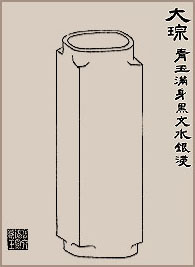
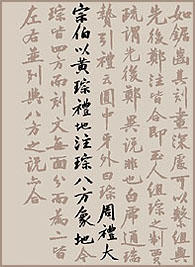
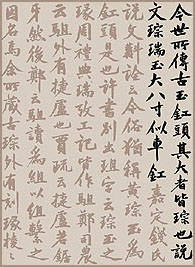

Ts'ung Tube
Ch'i-chia Culture Style (ca. 2200-1800
B.C.)
Height: 13.4 cm, max. width: 7 cm,
diameter of hole: 5.1 cm,
thickness: 0.93 cm
Carved from grayish-green jade with streaks of brown and white, this
ts'ung tube is lustrous and has "sugar-brown and white" coloration. The
width of both ends differs. The mouth was cut at an angle and is round
inside but not outside. The neck is slightly elongated, and the four sides
are flat. The wall of the hole inside is straight and lustrous.
Jades referred to as "Ch'i-chia culture style" indicates that they
are similar in many ways to archaeologically recovered jades from the
Ch'i-chia culture, but they cannot be positively identified as
such.


Pi Disk
Ch'i-chia Culture (ca. 2200-1800 B.C.)
Max.
diameter: 28.4 cm, diameter of hole: 5.35 cm, thickness: 1.9 cm
Carved from light green jade, the surface of this disk has weathered
to a reddish hue. Uneven in thickness, one side protrudes slightly yet is
still level. The other side is damaged. The hole was drilled from one side
and is relatively small in diameter.
The level side is engraved on the left and right with poetry of the
Ch¨ien-lung Emperor (r. 1736-1795), whose imperial seals appear engraved
at the top and bottom. Only an imperial seal is engraved on the back at
the top and bottom. A square sandalwood screen stand with a plug in the middle
was specially designed for the
disk.
Traditional studies on pi disks in
"Illustrated Study of Ancient Jades"
...mention that the
round shape of the pi disk was a symbol for the heavens and that green
pi disks were used to venerate
heaven.
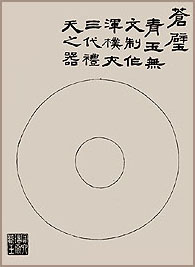
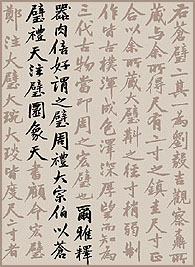
NEXT PAGE
SHOP HOME









